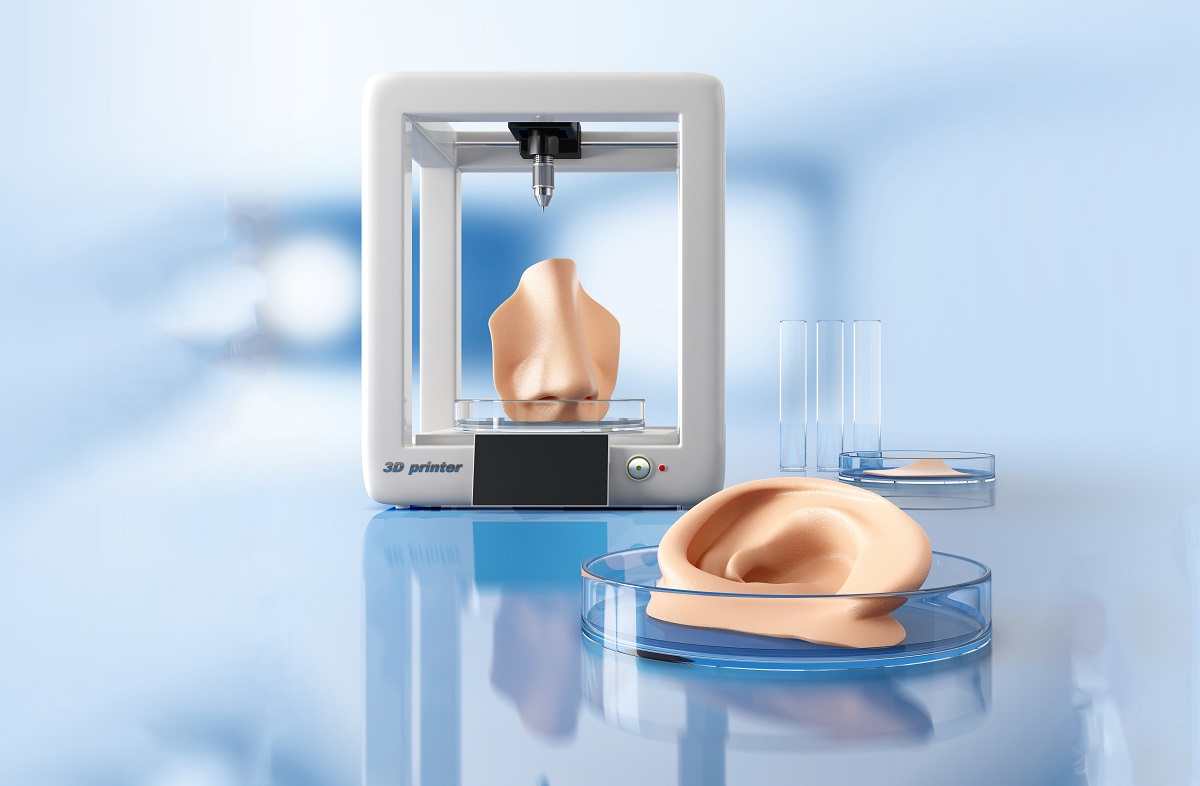Since antiquity, Man has used materials available in nature to fix, repair or heal any damage to the body, after an impact, an accident, or whenever a disease manifest.
In Ancient Egypt mummies where found to have artificial eyes, ears, teeth, and noses; in China and India, body malformations were fixed or even reconstructed with waxes, glue, and fabric. With the last 50 years’ technological and scientific progress, it was possible to create impressive materials, from the most rudimental orthopaedic implants to the most advanced lab-made biomimetic materials. These allow for an increasing efficiency of Tissue Engineering therapeutics, a branch of Biomedical Engineering.
Among the more recent technologies we find 3D printing of prosthetics and biomaterials used in various medical specialties. But what can we expect from 3D printing in medicine?
What is 3D printing?
This kind of technology is based on a sci-fi-like concept. Through printing devices, it is possible to create anatomical structures that are compatible with the body, and depending on the type of material used, those structures can even integrate the living organism that is the human body.
3D-printed prosthetics and implants can be adapted in order to suit only one determined organism. The ability of creating something so personalised alone can decrease infection and rejection rates, naturally improving the function of the prosthetics or implant.
What are the applications of 3D printing in medicine?
Currently 3D-printed products can be used in neuro-, cardiac, orthopaedic, and maxillofacial surgeries, tissue engineering and indirect manufacturing of medical devices.
Recently, a group of scientists at the University of Tel-Aviv was able to create an artificial heart, printed off of biological materials. This organ was around 3 centimetres, comparable to a rat or rabbit heart, but failed to pump blood on its own. Nevertheless, many other attempts are still being made. If the team succeeds, we might be facing a revolution in the medical area. 3D printing might ease the shortage of organ donors and, at the same time, can allow the decrease in cost and the intrinsic difficulties in organ transplants.
In 2018 a group of Italian researchers was able to create blood vessels from biopolymers and biological cells. Albeit in an initial phase, this study and its progress can represent the possibility of using prosthetic blood vessels in cases of cardiac failure, improving the outcomes of surgical procedures and the health of millions of people!
Bone tissue reparation and 3D-printed bone implants are also a reality. By using biomaterials and laboratory-made structures to support these materials, it is possible to create anatomic bone structures that promote regeneration and bone growth in the human organism.
In the University of Wollongong, Australia, a group of researchers was able to print ears, by 3D printing. The use of these printed anatomic structures will be a great help, for example, to children who suffer from Micotia, a congenital ear deformation.
What is the future impact of the advance of 3D printing for humans?
This is, undoubtedly, a million-dollar question. What will be of us in a near future? Will each and every one of us have access to “spare parts” that can save us from sickness?
We believe so. The answer is always on the side of scientific research and technological development and, without a doubt, in the investment of governments and tech giants in this field. With the proper commitment to 3D printing, we will surely evolve so that the use of biologic organs and implants will be a reality for almost all human beings. There are, however, some limitations to this technology, as well as some moral questions…
Is it safe to create organs in a laboratory, with total confidence that the materials that make up those organs are completely innocuous for humans? We need to wait for this scientific research to develop, in order to have more data on it.
Is it morally acceptable to create living tissue in a lab? We believe so. Just like any other medical therapy recreated in a lab, the development of living tissue in a controlled environment may enable its own use to treat the sick with the added bonus of having biological materials in its composition – which can increase the effectiveness of this kind of therapy.
Will we become bionic? Well, 3D printing is a technique that allows using biological materials, which makes any organ or implant a person may need or have very similar to their own molecular structure. Therefore, no electronic components – in addition to the 3D-printed organs or implants – would be needed to achieve the desired effectiveness.

 English (UK)
English (UK)  Español
Español 